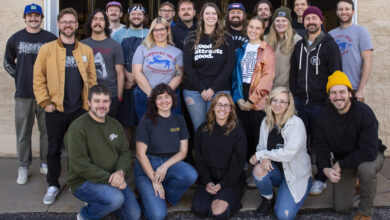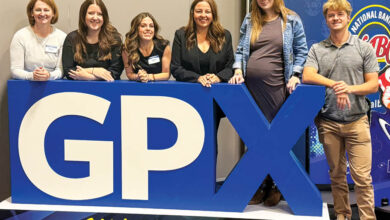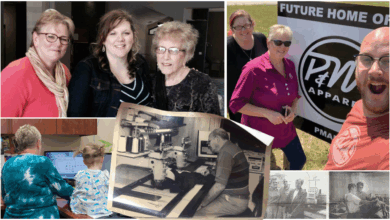Most small business owners in the sign and graphics industry are shifting from leasing their equipment to taking out a loan, and not just for the tax benefits.
That’s because the business owners own the equipment as soon as they start the loan, while a lease requires a balloon payment at the end of the loan or a return of the equipment. Business owners can also immediately start earning off their investment with new equipment or updated or upgraded purchases.
“In the sign and graphics industry, typically the customer is buying something that’s going to make money for them right away,” said Greg Bourdon, COO of ElmBlue Capital, a business banking service based in Stratham, New Hampshire, that provides capital to small and medium-sized businesses for equipment purchases. “Any piece of equipment that’s producing something that the business then sells makes it much easier to justify buying that piece of equipment.”
Another difference in financing and leasing in the sign and graphics industry is the pace of technology, said Jeff Mansfield, vice-president of business development for Beacon Funding in Northbrook, Illinois, which provides equipment financing services to small to mid-size businesses.
“In industries like construction or manufacturing, a piece of equipment might remain cutting-edge for 15 to 20 years. But in the sign and graphics industry, printing presses, wide-format printers, and finishing equipment can be outdated within five years,” Mansfield said. “Equipment usage varies greatly in this industry —some shops may need high-volume, industrial-grade printers running around the clock, while others operate with smaller-format machines. Financing solutions are designed with flexibility so that businesses of all sizes, from startups to established shops, can get the equipment they need.”
Cash is one option for making those needed equipment purchases, since the purchases can be claimed as expenses the same year for tax write-offs, while also not requiring any kind of interest payment.
“It’s obviously a very fast and easy process,” said Troy Putnam, director of sales for Geneva Capital LLC, in Alexandria, Minnesota, which offers equipment financing and leasing solutions. “The customer is in control of their cash and is not waiting on anyone to expedite it.”
Using cash, however, can put a strain on working capital, limiting a business’s ability to have funds in place for future growth, Putnam said, adding that a loan or lease may end up being the better option.
For customers wanting to make the purchase through a loan or lease agreement, Bourdon starts with a credit application, either online or on the phone — he also works with vendors wanting to sell equipment to buyers needing financing services. The credit application asks for basic information about the business and type of ownership, plans for equipment usage, and budget and revenue forecasts.
Once credit is approved, Bourdon provides education around different financing options and payment plans and, if needed, how the business can improve its credit, particularly if the owner is just starting out and doesn’t have established credit or a high enough credit score.
“Our goal is [to] be able to find the product that fits,” Bourdon said. “The better your business credit and payment history is, the better access you will have to bigger and better financial products.”
Loans
For loan products, Bourdon sets up agreements with monthly payments that are based on the total cost of the equipment, plus interest, while also working with customers to ensure they can bring in enough revenue to make all of their payments. The downside can be a larger down payment, as well as tying up credit capacity that can be used elsewhere, but then there isn’t a reoccurring lease either.
“It’s easier for us and the business owner to come up with a plan for an ROI that goes back to that monthly payment,” Bourdon said. “Being able to finance that helps them generate more positive cash flow more quickly in the process.”
A loan follows a fixed payment cycle throughout the term, and the customer owns the equipment from the first day of the agreement, owing the entity that takes out a lien on the equipment. One type of loan is an Equipment Finance Agreement that allows customers to pay off the loan earlier than its term, while a lease is difficult to end early.
“A bank loan could be an easy
process if you have an established relationship with the bank or local lending source,” Putnam said. “You can get low rates. And you could consolidate with other loans.”
Working capital loan
A working capital loan is an income-based, short-term loan, typically for 6-18 months, with high payments and that’s used to invest in immediate business needs. Cash backs the loan, unlike an equipment loan that’s backed by the actual equipment that can be repossessed and resold.
“Working capital is a good solution for short-term funding, if you’re looking to get quick cash — and looking to pay it off over a short period of time, typically six to 24 months,” Putnam said. “The benefit of it is immediate cash. It’s not tied or secured by any collateral. It’s an unsecured debt obligation.”
Startup financing is another funding option, but for newer businesses wanting to acquire equipment and small assets, freeing up their cash for other business activities, such as purchasing inventory and supplies or covering the costs of building enhancements.
“Some customers buy equipment on their line of credit, but the risk there is if you max it out, then if something comes up that’s urgent, you’ve removed that buffer,” Bourdon said.
Small Business Administration loan
Another type of loan product, a Small Business Administration loan, requires a more intensive application process and can be difficult to acquire for equipment. It’s more ideal for large asset purchases, such as buildings, and typically has a longer term of seven to 10 years.
“Whoever you choose for a lender, whether it’s us or somebody else, they should be open and willing to discuss the variety of options available to you that meet your specific business needs,” Bourdon said. “The other thing is [to] choose a lender that feels like a partnership. Your lender should be equally invested in the success of your business and want to be there for your next piece of equipment.”
Leases
Alternatively, a lease is more like a long-term rental with flexible options at the end.
“At the end of the lease, (the customer) can often choose to purchase the equipment for a nominal amount, upgrade to new equipment, or simply return it,” Mansfield said. “Leasing is especially useful in industries like sign and graphics where technology evolves quickly, and companies may not want to be locked into older models.”
The customer also may need the equipment for a short amount of time or isn’t sure about making a final purchase. They don’t have to make a large down payment, and during the term of the lease, they’re simply renting the equipment, though they may end up investing more in payments than with a loan. As with a loan, a lease generally can have a duration of 12 to 72 months, though oftentimes the term is shorter, especially with equipment that has a limited lifespan.
“You don’t want to be on a lease beyond the equipment’s useful life — or making payments if you’re no longer using it,” Bourdon said.
A lease protects against technological obsolescence, allowing customers to obtain a new piece of equipment with a new lease, Putnam said.
“If it’s highly technology-driven, it might be obsolete in three to five years,” Putnam said.
At the end of the lease, the customer can opt to return the equipment or pay a fair market value or residual balloon payment, but the amount is unpredictable and is based on the equipment’s current value. If the customer decides to make the final payment, they own the equipment, which they can continue to use for operations or as a spare for additional capacity.
Previously, customers tended to opt for leasing due to the tax benefit of taking monthly deductions and claiming multiple tax-year write-offs as business expenses. Now, under the current administration’s One Big Beautiful Bill, customers purchasing new and used equipment through cash or a loan can immediately deduct the full cost of the equipment without seeing the equipment depreciate.
However, understanding the intricacies of a standard appreciation schedule typically comes from a tax advisor, Bourdon said.
“People should work with an accountant or CPA to find the best option for them — and the tax benefits that are in place for 2025 and beyond, so they understand how they can help their business,” Bourdon said. “They should know what’s available and have an idea of what questions to ask.”




